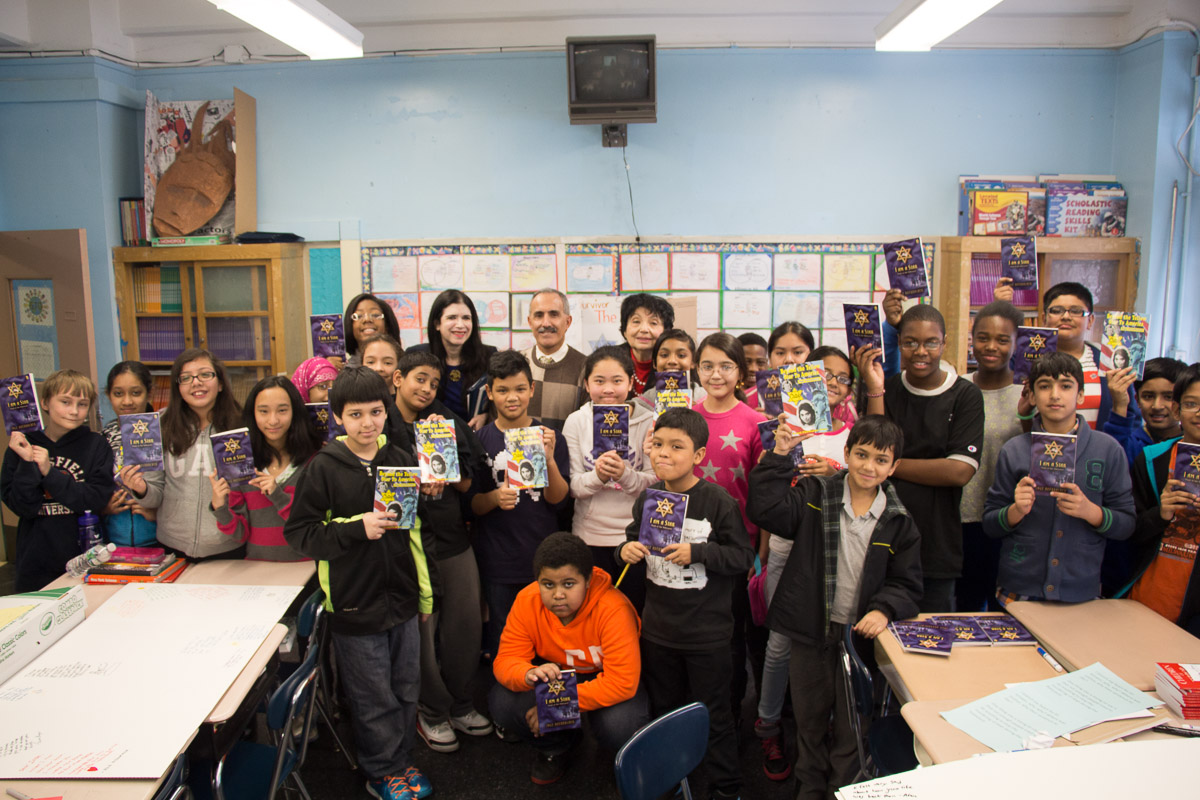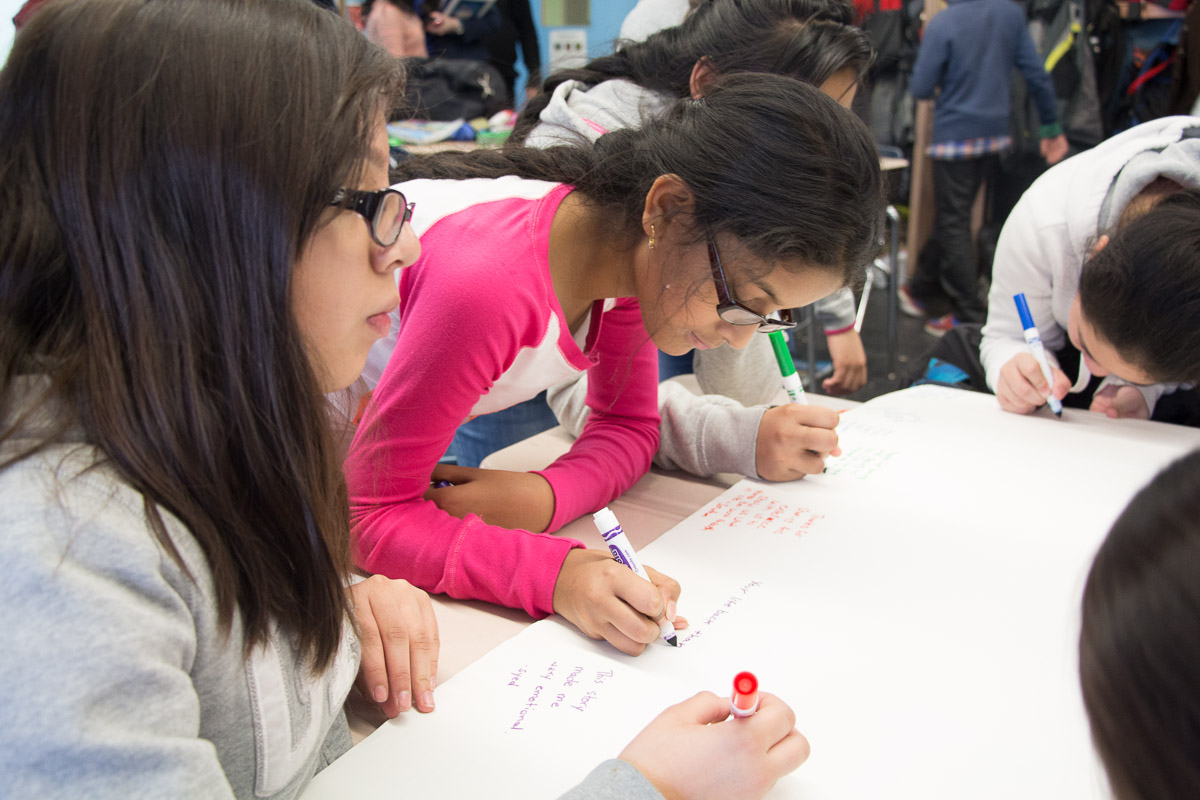
Denis Nolan isn’t an English language arts teacher, but when he moves from class to class on the first floor of Ditmas Junior High School, he’s almost always pushing a trolley of books. His philosophy is that social studies can be best taught through literature and he steers his students through a series of difficult books each year that deal with themes such as authoritarianism, bullying, and genocide. Some Common Core critics have claimed that new standards have led to teachers using less challenging literature in their classes, but in a typical social studies classes, Nolan’s students can be found flipping through George Orwell’s Animal Farm, Zlata Filipovic’s A Child’s Life in Sarajevo, or Chinua Achebe’s Things Fall Apart.
Sixth-grade students generally respond well to his teaching methods. They are well behaved in class, accustomed to hunting books for evidence and working in teams to answer questions or brainstorm ideas. Group sessions are followed by “share outs,” lively ten-minute periods during which students tell each other what they’ve learned. But sometimes their eyes glaze over the pages as Mr. Nolan asks if they know what it is they’re supposed to be looking for. And as it does in almost any classroom, boredom sometimes sets in. For students, a new book just means another day of open-ended questions staring back at them from their worksheets.
When students finish a series of lessons, they usually return their books to Mr. Nolan’s trolley and work on reflective essays before the next title is handed out. But this February, classes got the chance to dig a little deeper and meet the author of the Holocaust memoir they’d been studying. The visit was just what they needed – and it made a distant time in history seem frighteningly real. Almost none of the students at Ditmas are Jewish, but when visiting author Inge Auerbacher told them that Hitler would have gone after African-Americans or Muslims had he gained more power, they sat up in their seats.

When Rose Reissman heard Nolan had been teaching his students about the Holocaust by having them read Auerbacher’s 1986 memoir, I Am a Star, she wondered if the author might live nearby. When she learned that Auerbacher lives in Queens, Reissman reached out to her and arranged a school visit. She also wrote a set of lesson plans that showcased the book alongside other writings by Anne Frank and Malala Yousafzai, among others.
Auerbacher, who is 79 and has black hair and a strong, confident voice, has visited schools across the country for years, speaking against the kind of hatred that powered the Nazi Regime and led to the persecution of approximately six million Jews. She speaks of being physically labeled with a yellow Star of David, but also of rising above her oppressors, surviving the Terezin concentration camp, and forging a life for herself as a successful chemist and author in America. In her own words, a star will “stand tall and proud” while its voice “shouts in silence loud.” Believing in oneself and speaking up when necessary is a message she has made her mission to impart wherever she goes.

After the presentation on February 3 in the school auditorium, some lucky students had the opportunity to meet Auerbacher once they returned to their classroom. A line stretched down the middle of Room 124, full of students waiting to have their copies of I Am a Star signed. And during a musical performance for the author, the young singers were happily surprised when Auerbacher got up from her seat and joined in.

Auerbacher’s visit didn’t mark the end of their studies on the subject of memoirs and war, though. Following the visit, students reflected on what they heard and tried to determine Auerbacher’s purpose for saying and showing what she did
“I expected her to be weak, afraid to talk about what happened,” one student said in class, almost a week after the visit.
“I was surprised she still carries her doll, even though she’s 79 years old,” said another.
“Why would Inge bring that doll?” Reissman asked the group of sixth-grade students. They brainstormed some reasons, which Reissman then followed up with another question.
“What does the doll represent?” she asked.
“This is a deep one, kids,” warned Amanda Xavier, another teacher. The room was silent.
Finally a boy named John raised his hand.
“Her childhood?” he asked. Both teachers looked at each other and smiled. It was the kind of connection teachers long for.




